#Cartoonists Northwest
Explore tagged Tumblr posts
Text
youtube
Check out Cartoonists Northwest's March 2025 Meeting with their speaker, Graphic Novelist Maureen Burdock!
0 notes
Text
Boycott!

I don't know if all the collections will arrive, but well…
Now that I have your attention:
#gravity falls#palestina#gaza#israel#free gaza#palestine#israel is a terrorist state#cartoonist#cartoon#free palestine#free ukraine#dipper#dipper pines#gravity falls dipper#gf dipper#dipper x pacifica#pacifica northwest#gravity falls pacifica#gf pacifica#dipcifica#billford#the book of bill#deadpool#deadpool 3#deadpool and wolverine#save the children#save family#please help#send help#pls help
45 notes
·
View notes
Text
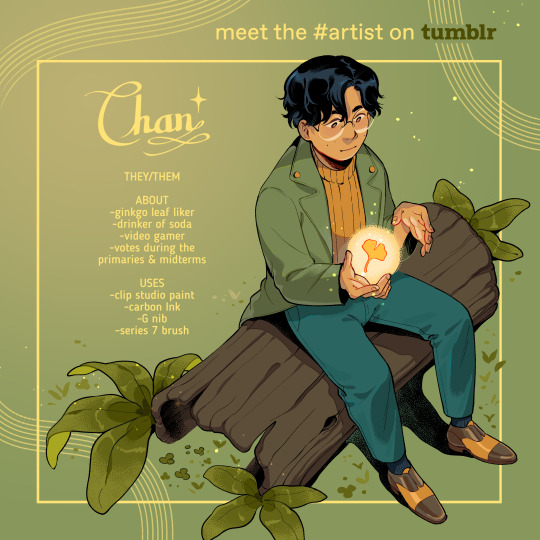
Meet the Artist: @aluhnim
Hi folks! My name is Chan, and I am a cartoonist living in the Pacific Northwest. I make a lot of short comics that delve into the difficulties of being a creative because I struggle with my own artwork, too! With my silly little comic art degree, I was somehow allowed to make graphic novels for a living. Thank you to everyone who stumbled upon my comics on Tumblr over the many years!
Nice to meet you, Chan! Check out some pieces they have shared below.
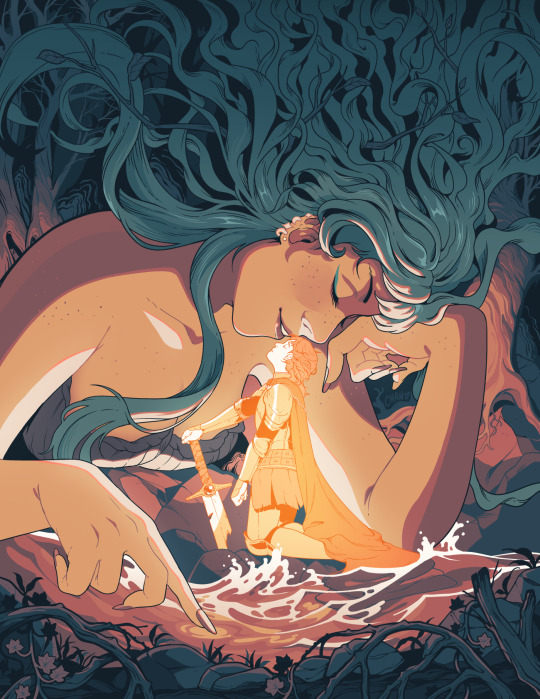
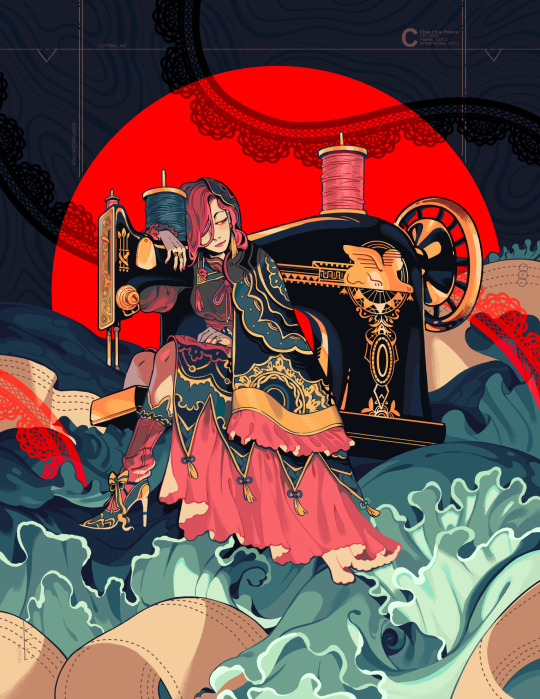
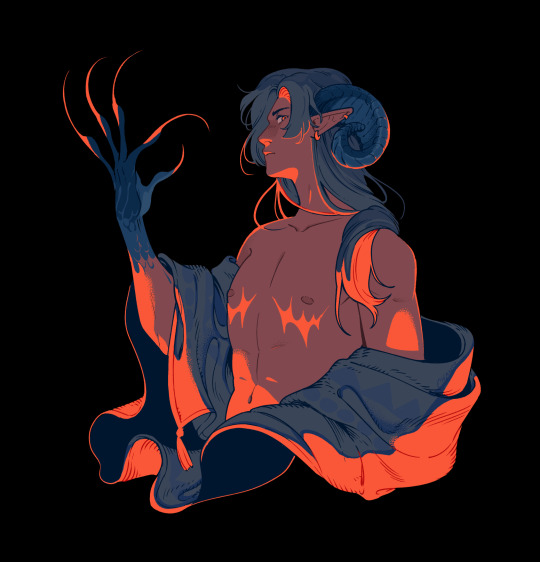
For more of Chan’s work, be sure to take a look at their Tumblr, @aluhnim!
3K notes
·
View notes
Text

Still reading... but found some great 8th Air Force photos while researching some other stuff...
February 2, 1944, 8th Army Air Force, Caption Reads:
The Plexi-glass nose of this Boeing B-17 Flying Fortress was not removed by mechanics it was shot during a savage attach by swarms of FW 109s after a rad over northwest Germany. This picture of "Old Bill" was taken a few minutes after the wounded pilot, 1st Lt. Wm. D. Whitson, of Denton, Texas, had landed the battle-damaged Fort at its home base. With the navigator killed, the pilot, co-pilot, bombardier, a photographer observer and four gunners wounded during the 20 minute running flight over the North Sea, "Old Bill," named after the familiar character created by "captain" Bruce Beins-father, British cartoonist in the First World War, was brought h ome by the bombardier and two gunners. Over the base, Lt. Whitson, took over the controls and landed the big bomber with useless flaps and a shot-out hydraulic system at a speed in excess of 150 M.P.H.
Good Lord, those guys had it rough.
@tcamp202 via X
19 notes
·
View notes
Text
First Book Review!

Figured I'd start off with a book I found years ago by chance that really stuck with me. It's a perfect symbol of the kind of community that I want to strive for and there's so many perspectives showcased here that I think at least one is bound to resonate with you. With that said, onto the fine details.
Title: Anything That Loves, comics beyond "gay" and "straight"
Author: Edited by Charles "Zan" Christensen and complies the work of over 35 artists, cartoonists, and writers
Genre: All over really, but there is some 18+ content
Rating: ⭐⭐⭐⭐⭐
Why I picked it: Discovered it in a used bookstore on a queer/LGBT themed display and was intrigued by all the different art styles.
Quick Summary: A bunch of artists who identified as bi, pan, queer, or otherwise outside the binary were asked to make a piece about their identity. Some examples include a gay man who is only into transmen, an ace into latex who bonds with a likeminded neighbor, a woman who gets out a ten year lesbian marriage only to discover she's attracted to men again, a nonbinary person that doesn't know how to label their relationship, and of course tons of bisexuals trying to explain to both straight and gay loved ones that they're neither and both communities being confused by it. Some are simple one page infographs while others are a fifteen page long memoir. Some are digital, others are hand drawn. Some are sweet and wholesome, others are raunchy and explicit. No two are alike and I think it only further serves the book's overall message. The queer experience cannot be put into one box and that's what draws so many people to it. However, as the current political climate shows, it can also be confusing to those outside of it and thus they want to destroy it. Overall though, most artists are still proud of who they are in spite of the pushback they've gotten or are hopeful that they will find a path to self acceptance. It's a great pick me up for a bad day and can remind the reader that no one struggles alone. My personal favorite in the collection is This Time It's Personal by Powflip and I highly encourage you to pick up this book and discover your own! Where to find it: My first and highest recommendation is to request it from your local library or you can also buy it from it's publisher Northwest Press to support the artists. https://northwestpress.com/shop/anything-that-loves/
#lgbtqia#lgbtq#queer#lgbt#trans#transgender#bisexual#lesbian#gay#gay community#lesbian community#pansexual#non binary#nonbinary#genderqueer#genderfluid#bigender#multigender#outreach#book review
4 notes
·
View notes
Text
Local Author Event: Seattle Samurai

Kelly Goto's new book, Seattle Samurai: A Cartoonist's Perspective of the Japanese American Experience, is a commemoration of the life and work of not just her father, but also the early Japanese immigrants of Seattle and those who came after. This beautiful coffee table book celebrates the art and life of Kelly's father, Sam Goto, and features many strips from his 2012-2018 comic strip Seattle Tomodachi, alongside gorgeous photography. Sam was a longtime Seattle and Mercer Island resident and began Seattle Tomodachi at the encouragement of his wife, Dee, as a way to help fund the Japanese Community and Cultural Center of Washington's (JCCCW) weekly ad in The North American Post, Seattle's Japanese American newspaper. Now, Kelly is releasing this book as a way to honor her father and his part in Seattle history.
Seattle Tomodachi is a must-read for those interested in the history of the Japanese community in Seattle and the wider Pacific Northwest. The comic follows the fictional Shigeru Tomo (influenced by the life of real Shigeru Osawa, believed to be the first second-generation Japanese born in Seattle) as he strives to live the samurai way. Shigeru's adventures are also inspired by Sam's own experiences and those of Seattle's Japanese American community: the building and funding of the new Japanese Language School in downtown, the importance of Japanese merchants in the Klondike Goldrush, the founding of Uwajimaya (one of my favorite stores to visit for a wander), the discrimination many Japanese American's faced. Full of the values that Sam believed in and passed down to his children, this book exemplifies the joy that Sam lived his life with.
Join us and local author Kelly Goto on Wednesday, October 23 from 6:30 to 8:00pm, to celebrate the launch of her book, Seattle Samurai: A Cartoonist's Perspective of the Japanese American Experience. We can't wait to celebrate with these Mercer Island residents and longtime friends of the bookstore! Books can be purchased beforehand or at the event, and Kelly will be signing after discussing the book with us. Drinks and appetizers will be available, and proceeds from book sales will be donated to the JCCCW.

— Becca
2 notes
·
View notes
Text
Twenty-three years in Portland
Self-Portrait, 25 March 2024. Minolta Freedom Zoom 125/Aqua 400 Time does fly. On this day 23 years ago, April 4, 2001, I landed in Portland. I had only been here once before, in June of 2000. This was an era before the Rose City was a known quantity to anyone outside of the Northwest, so all I knew about it was that there were a lot of zine kids/cartoonists here (including a few friends), the…

View On WordPress
3 notes
·
View notes
Text

Jonathan Hill is an award-winning cartoonist, illustrator, and educator living in Portland, Oregon. He graduated in 2003 as valedictorian of the Savannah College of Art & Design with a degree in Sequential Art. Some of his clients include Microsoft, the Portland Trailblazers, the Viet Nam Literature Project, the Inlander, Fantagraphics Books, Dark Horse Comics, Tor.com, The Believer Magazine, Literary Arts, and Powell's City of Books. He’s been the staff illustrator to The Asian Reporter since 2007. Jonathan also teaches comics and visual narrative. He was an associate professor in the Illustration Department at the Pacific Northwest College of Art, building the comics curriculum from the ground up, taught comics and illustration classes for youth programs at the Oregon College of Art and Craft, and was Writer in Residence through Literary Arts' Writers in the Schools program. He currently serves as vice-chair on the Board of Directors of Literary Arts also frequently partners with OK You on projects.
0 notes
Text


Paying the Land
July 7, 2020
by Joe Sacco (Author)
NAMED A BEST BOOK OF 2020 BY THE NEW YORK TIMES, THE GUARDIAN, THE BROOKLYN RAIL, THE GLOBE AND MAIL, POP MATTERS, COMICS BEAT, AND PUBLISHERS WEEKLY From the “heir to R. Crumb and Art Spiegelman” (Economist), a masterful work of comics journalism about indigenous North America, resource extraction, and our debt to the natural world The Dene have lived in the vast Mackenzie River Valley since time immemorial, by their account. To the Dene, the land owns them, not the other way around, and it is central to their livelihood and very way of being. But the subarctic Canadian Northwest Territories are home to valuable resources, including oil, gas, and diamonds. With mining came jobs and investment, but also road-building, pipelines, and toxic waste, which scarred the landscape, and alcohol, drugs, and debt, which deformed a way of life. In Paying the Land, Joe Sacco travels the frozen North to reveal a people in conflict over the costs and benefits of development. The mining boom is only the latest assault on indigenous culture: Sacco recounts the shattering impact of a residential school system that aimed to “remove the Indian from the child”; the destructive process that drove the Dene from the bush into settlements and turned them into wage laborers; the government land claims stacked against the Dene Nation; and their uphill efforts to revive a wounded culture. Against a vast and gorgeous landscape that dwarfs all human scale, Paying the Land lends an ear to trappers and chiefs, activists and priests, to tell a sweeping story about money, dependency, loss, and culture―recounted in stunning visual detail by one of the greatest cartoonists alive.
0 notes
Text
oh okay
That's fine
Blowing it up would probably not even get on the news anywhere, Like it's not small but nothing happens here, the most is like occasional gang activity, and what does happen is like so normal no one blinks twice.
Town yapping (I like talking about this place because it's ridiculously cartoonist)
"Oh there was a guy overdosing on the streetbench by the library? Yeah checks out there are a lot of druggies in that area." REAL CONVERSATION like
My town would be so cool if not for how trashy it is There's this huge cloud of steam that you can see from everywhere in the town from the paper factory downtown and it makes for a cool landmark and stuff.
It's populated pretty evenly split with pagans and hardcore Christians, the whole place ultimate battle between woke or traditional.
A lot of really creepy stuff happens and the majority of people have resigned to the fact that it's haunted all up in here and the people that refuse to believe get like traumatized by ghosts or something and start believing.
We're kinda like gravity falls if you got rid of the whimsy and added a lot of drug addicts. The main phrase that people from round here have is "It is *town name* y'know." Because you really shouldn't have any high expectations or even normal expectations for the events here.
It's in the northwest but half of the people here have southern accents for some reason, I think because if you go far enough north it just loops back to hillbilly south. There are a lot of hillbillies here. I have a minor southern accent but it's not really noticeable which I thank the flow cloud for because if it were id be deathly embarrassed.
WHY ARE THE SCHOOLS CLOSEING IN JERSEY NOT BROOKLYN IM CRASHING THE FUCK OUT
#Oh also HOW???#I guess it can be annoying but..#Oh golly#But#But but#Jake peralta dude#Carcino... : (....... Hate is a strong word man.......... really.....................
57 notes
·
View notes
Photo
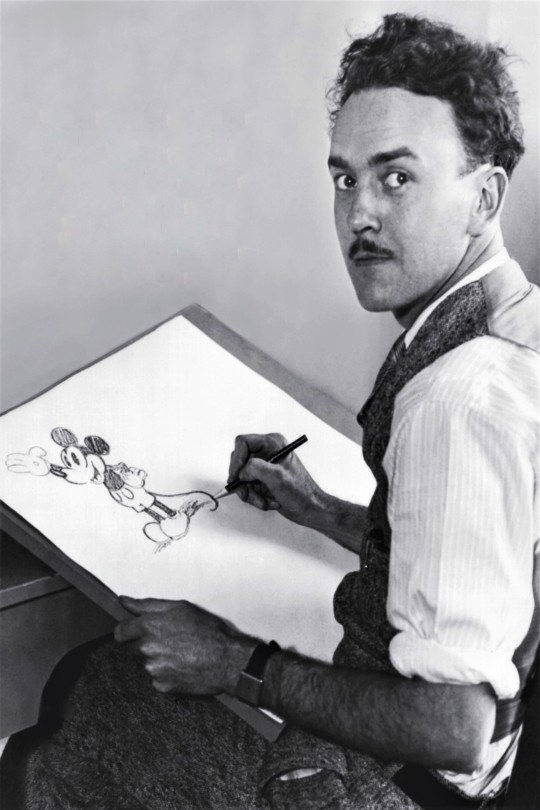
Ubbe Eert "Ub" Iwwerks was born on March 24, 1901. He was an American animator, cartoonist, character designer, inventor, and special effects technician, who designed Oswald the Lucky Rabbit and Mickey Mouse. Iwerks produced alongside Walt Disney and won numerous awards, including multiple Academy Awards.
Iwerks spent most of his career with Disney. The two met in 1919 while working for the Pesmen-Rubin Art Studio in Kansas City, and eventually started their own commercial art business together. Disney and Iwerks then found work as illustrators for the Kansas City Slide Newspaper Company (which was later named The Kansas City Film Ad Company). While working for the Kansas City Film Ad Company, Disney decided to take up work in animation, and Iwerks soon joined him.
He was responsible for the distinctive style of the earliest Disney animated cartoons, and was also responsible for designing Mickey Mouse. In 1922, when Disney began his Laugh-O-Gram cartoon series, Iwerks joined him as chief animator. The studio went bankrupt, however, and in 1923 Iwerks followed Disney's move to Los Angeles to work on a new series of cartoons known as “the Alice Comedies” which had live-action mixed with animation. After the end of this series, Disney asked Iwerks to design a character that became Oswald the Lucky Rabbit. The first cartoon Oswald starred in was animated entirely by Iwerks. Following the first cartoon, Oswald was redesigned on the insistence of Oswald's owner and the distributor of the cartoons, Universal Pictures. The production company at the time, Winkler Pictures, gave additional input on the character's design.
In spring 1928, Disney was removed from the Oswald series, and much of his staff was hired away to Winkler Pictures. He promised to never again work with a character he did not own. Disney asked Iwerks, who stayed on, to start drawing up new character ideas. Iwerks tried sketches of frogs, dogs, and cats, but none of these appealed to Disney. A female cow and male horse were created at this time by Iwerks, but were also rejected. They later turned up as Clarabelle Cow and Horace Horsecollar. Ub Iwerks eventually got inspiration from an old drawing. In 1925, Hugh Harman drew some sketches of mice around a photograph of Walt Disney. Then, on a train ride back from a failed business meeting, Walt Disney came up with the original sketch for the character that was eventually called Mickey Mouse. Afterward, Disney took the sketch to Iwerks. In turn, he drew a more clean-cut and refined version of Mickey, but one that still followed the original sketch.
The first few Mickey Mouse and Silly Symphonies cartoons were animated almost entirely by Iwerks, including Steamboat Willie, The Skeleton Dance and The Haunted House. However, as Iwerks began to draw more and more cartoons on a daily basis, he chafed under Disney's dictatorial rule. Iwerks also felt he wasn't getting the credit he deserved for drawing all of Disney's successful cartoons. Eventually, Iwerks and Disney had a falling out; their friendship and working partnership were severed in January 1930. According to an unconfirmed account, a child approached Disney and Iwerks at a party and asked for a picture of Mickey to be drawn on a napkin, to which Disney handed the pen and paper to Iwerks and stated, "Draw it." Iwerks became furious and threw the pen and paper, storming out. Iwerks accepted a contract with Disney competitor Pat Powers to leave Disney and start an animation studio under his own name. His last Mickey Mouse cartoon was The Cactus Kid. (Powers and Disney had an earlier falling-out over Disney's use of the Powers Cinephone sound-on-film system—actually copied by Powers from DeForest Phonofilm without credit—in early Disney cartoons.)
The Iwerks Studio opened in 1930. Financial backers led by Pat Powers suspected that Iwerks was responsible for much of Disney's early success. However, while animation for a time suffered at Disney from Iwerks' departure, it soon rebounded as Disney brought in talented new young animators.
Despite a contract with MGM to distribute his cartoons, and the introduction of a new character named “Flip the Frog”, and later “Willie Whopper”, the Iwerks Studio was never a major commercial success and failed to rival either Disney or Fleischer Studios. Newly hired animator Fred Kopietz recommended that Iwerks employ a friend from Chouinard Art School, Chuck Jones, who was hired and put to work as a cel washer. The Flip and Willie cartoons were later distributed on the home-movie market by Official Films in the 1940s. From 1933 to 1936, he produced a series of shorts (independently distributed, not part of the MGM deal) in Cinecolor, named ComiColor Cartoons. The ComiColor series mostly focused on fairy tales with no continuing character or star. Later in the 1940s, this series received home-movie distribution by Castle Films. Cinecolor produced the 16 mm prints for Castle Films with red emulsion on one side and blue emulsion on the other. Later in the 1970s Blackhawk Films released these for home use, but this time using conventional Eastmancolor film stock. They are now in the public domain and are available on VHS and DVD. He also experimented with stop-motion animation in combination with the multiplane camera, and made a short called The Toy Parade, which was never released in public. In 1936, backers withdrew financial support from the Iwerks Studio, and it folded soon after.
In 1937, Leon Schlesinger Productions contracted Iwerks to produce four Looney Tunes shorts starring Porky Pig and Gabby Goat. Iwerks directed the first two shorts, while former Schlesinger animator Robert Clampett was promoted to director and helmed the other two shorts before he and his unit returned to the main Schlesinger lot. Iwerks then did contract work for Screen Gems (then Columbia Pictures' cartoon division) where he was the director of several of the Color Rhapsodies shorts before returning to work for Disney in 1940.
After his return to the Disney studio, Iwerks mainly worked on developing special visual effects. He is credited as developing the processes for combining live-action and animation used in Song of the South (1946), as well as the xerographic process adapted for cel animation. He also worked at WED Enterprises, now Walt Disney Imagineering, helping to develop many Disney theme park attractions during the 1960s. Iwerks did special effects work outside the studio as well, including his Academy Award nominated achievement for Alfred Hitchcock's The Birds (1963).
Iwerks' most famous work outside creating and animating Mickey Mouse was Flip the Frog from his own studio. According to Chuck Jones, who worked for him, "He was the first, if not the first, to give his characters depth and roundness. But he had no concept of humor; he simply wasn't a funny guy."
Iwerks was born in Kansas City, Missouri. His father, Eert Ubbe Iwwerks, was born in the village of Uttum in East Frisia (northwest Germany, today part of the municipality of Krummhörn) and immigrated to the United States in 1869. He is the father of Disney Legend Don Iwerks and grandfather of documentary film producer Leslie Iwerks.
Daily inspiration. Discover more photos at http://justforbooks.tumblr.com
78 notes
·
View notes
Video
youtube
Cartoonist Northwest’s February guest was artist Violet Alexis Bea! Violet is a queer artist from India who has studied both architecture and comics and has been creating art their whole life. They have freelanced artwork and merchandise for musicians, fabric brands, and bars. In 2021, they collaborated with Collective Craft Orissa to design 13 layouts depicting the Gita Govinda. In 2023, they worked as a Graduate Teaching Assistant for Ajuan Mance’s Make it Queer: B. Illustration class and served as a Lab Monitor for risograph machines at the CCA Flat Lab.
An alum of the 2024 cohorts for the Queer Ancestors Project and Performing Voices of Bhakti, Violet has vended at shows such as SF Zine Fest, Pride in Panels, FlameCon, and Santa Rosa Zine Fest. They enjoy traditional media such as pencil, ink, and lino carving, and are proficient in digital drafting and rendering with Photoshop, Illustrator, and AutoCAD. Their creative practice also extends to chainmail, clay, and crochet.
Violet’s skills in design, storytelling, and psychedelic expression shape their unique style. Their intent and philosophy are driven by a love for history, the stories of people, and the vast beauty of nature. For Violet, art is liberation.
#youtube#Indian Art#Krishna#Illustration#Bhagavata Purana#Gopis#radha#Violet Alexis Bea#Cartoonists Northwest
2 notes
·
View notes
Text
Boycott!

People in the miracolous fandom piss me off, especially their approach to bullying (Because clearly, if a character is white and blonde, she is not a victim, if she were a boy, maybe they would feel sorry for her, but she is a girl? Lord, she is beyond repair and not at all she's not a victim of bullying, and she's 15, so she should know! that victims of groomers should also know? After all, if they have such an "educated brain" at this age, instead of attacking the grtoemer we should attack the victim, because at this age they should know… Sorry, but that's how I see this fandom)
Although what can you expect from a society that attacks Judo from "Bluey", because WARNING, SHE BEHAVIORS LIKE A CHILD OF HER AGE

Now that I have your attention:
------------------------------------------
There are just some things that piss me off, especially the fact that a child is expected to be 100% responsible, especially when he or she is a victim of neglect (Because yes, abandonment is neglect)

Yes, I'm a former scapegoat… But okay, don't forget about the rebounds, they're at the top
#gravity falls#palestina#gaza#israel#cartoonist#free gaza#cartoon#palestine#free palestine#israel is a terrorist state#ml fandom salt#thomas astruc salt#chloe bourgeois#the owl house#toh#luz noceda#billford#the book of bill#pacific northwest#gravity falls pacifica#dipper#dipper pines#gf dipper#gravity falls dipper#disney#stranger things#save the children#save family
26 notes
·
View notes
Text
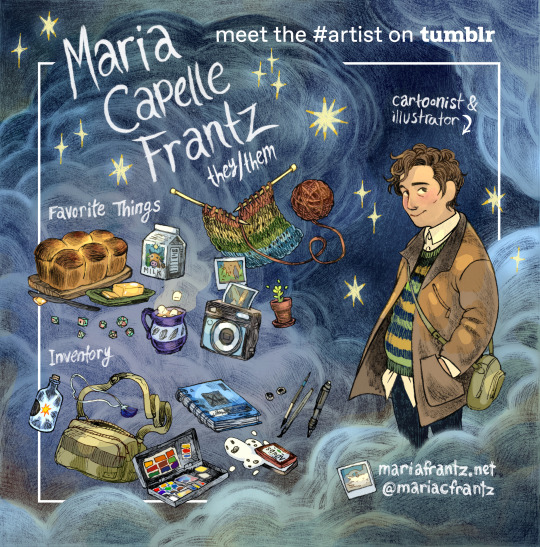
Meet the Artist: @mariacfrantz
Hello! I’m Maria, and I’m a cartoonist and illustrator working out of the Pacific Northwest. I published my first graphic novel, The Chancellor and the Citadel, in 2019 and am currently working on my second. When I’m not making comics I love to draw cloudy landscapes, cozy cluttered spaces, and the occasional self-indulgent fanart.
Nice to meet you, Maria! They have shared some of their works below for you all to check out.



For more of Maria’s work, be sure to go to their Tumblr, @mariacfrantz, for more!
#meet the artist#meet the artist on tumblr#artists on tumblr#art#mariacfrantz#the chancellor and the citadel
5K notes
·
View notes
Text
Ranking : Gus Van Sant (1952-present)

I was somewhat familiar with Gus Van Sant prior into taking the deep dive through his catalog, but he was certainly a man that I thought I had a handle on. I knew he had more than a few amazing films under his belt, but the recent years had not been kind to him (see the shot taken at him in Jay and Silent Bob Strike Back). I knew that he was from the Pacific Northwest (Oregon specifically), and his coming of age in an area that embraces weirdos and outsiders had an impact on him as a human and as a creator. I knew that films like Milk and Good Will Hunting had taken Van Sant to the highest heights, while the collective panning of films like Psycho and Last Days served as valleys in a career full of glorious peaks.
What I came to discover, however, was a man with genuine creative integrity, and lots of it. I found a director who understood his characters and actors on a human level, and shared them with viewers in ways that helped rich connections develop. I saw a director who was not afraid to make those that society often considers outcasts the emotionally rich and important centers of his narratives. I watched Gus Van Sant present, explore, develop and refine his style over deeply independent and infamously studio-driven projects, giving all experiences as much care and attention as he was able. I saw films I was familiar with find placement behind films I was new to, I discovered that his recent creative years have not been as kind to him as the first two-thirds of his career, and I can see that there still may be a bit of a smolder left in his creative fire.
Ranking directors is a labor of love, but by no means do I consider myself the definitive professional on film canon. I enjoyed all of the Gus Van Sant films I watched on some level, and as always, for those brave enough to interact, I’d be curious to see where you would make adjustments to the list. But enough introduction talk, let’s get into what you folks came for!

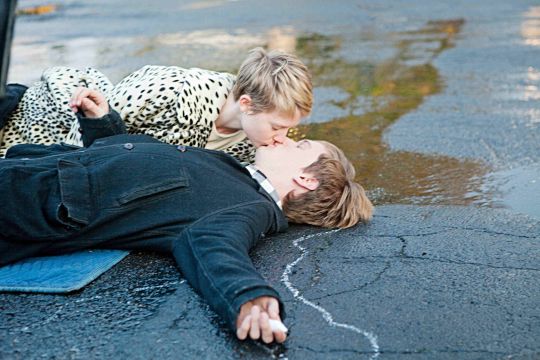
17. Restless (2011) There are things about Restless that I want to love without judgement. First and foremost, Mia Wasikowska is an absolute treasure who shines in this performance from the earlier portion of her career. The portrayal of Hiroshi is one of the more subtle, substanced and interesting ways of using a ghost within the film framework. As minor a thing as it may be to the casual moviegoer, some of this film’s technical aspects are astounding, specifically the costuming and the lighting choices. Where the film distracts me, and therefore drops in these rankings, is where it takes the YA approach to the romantic drama, with a healthy dose of manic pixie dream girl energy thrown in for good measure. When it comes to displaying romance on-screen, be it teenage or otherwise, there are no expectations, even for a director with a distinct style. Where my issues arise are in the way that death is handled in this film… while I do understand that not every film has to be a distinct statement for a director (especially a film written by another individual), Gus Van Sant had already established a very mature approach to the subject of death, and the way that death and the manic pixie dream girl aspects are intertwined feels more on the amateur side than I am comfortable with for a Gus Van Sant film. Maybe giving the impossibly troubled young man a muse with an expiration date as his way to find the best version of himself is a stroke of genius that provides a gateway for deep commentary on the concept of the manic pixie dream girl, but the film is so approachable and not the type to bare teeth (be it satirically or otherwise) that I doubt there is any subtext to its intention. For that reason, this film finds itself on the bottom half of the Van Sant canon.

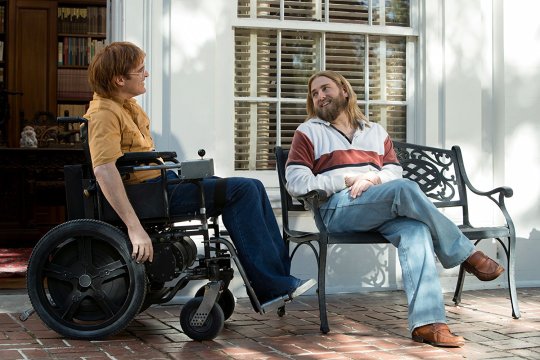
16. Don't Worry, He Won't Get Far on Foot (2018) After the critical and box office disappointment that was The Sea of Trees, director Gus Van Sant had quite the hill to climb with his next film, and with his adaptation of Don’t Worry, He Won’t Get Far on Foot, it seemed he was able to right those respective ships. Strangely, the film failed to connect with me, and as far as I can tell, it seems to be the victim of an “all sizzle, no steak” scenario. The film is certainly a showcase of a very diverse cast, and based on both the flashback-based and group therapy approach to the story, there are a wealth of opportunities to create memorable moments. Unfortunately, and perhaps due to an oversight on my end, I failed to find enough substance during my viewing of the film to prop up the parade of moments. What it felt like I was left with, sadly, was a Simple Jack-level approach to conveying a paraplegic-centered story, which undercut the fact that the film is actually telling the true story of cartoonist, artist and musician John Callahan. That’s not to say that the film doesn’t have it’s positive aspects, such as the John Callahan illustrations and the animated versions of his work, but those positive aspects feel sparse in comparison to how much the film relishes in what feels like Oscar bait. If nothing else, see this film for Jonah Hill, because it took me much longer than it should have to recognize him, partly due to his impressive weight loss and partly due to how dedicated he is to achieving the film’s period look.

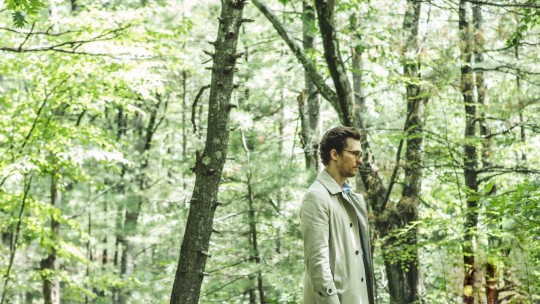
15. The Sea of Trees (2015) Death is no stranger in the films of Gus Van Sant, but I don’t feel that it would be bold to state The Sea of Trees deals with death in the most direct manner. For those that subscribe to grief having stages, this film accounts for all of them in some way, shape or form during the course of the narrative as we watch Arthur Brennan fall apart and rediscover himself in the wake of losing Joan Brennan, his wife. Placing the film in Aokigahara (aka the "Japanese suicide forest") not only gives the film a sense of natural beauty, but a foreboding sense of dread and despair as well. The core cast is as strong as any found in a Van Sant film, with Matthew McConaughey, Ken Watanabe and Naomi Watts all turning in solid performances. Sadly, the film falters in one very core aspect : sympathy for the protagonist. I found myself feeling very bad for Joan Brennan as I watched her arc, and despite knowing nothing about Watanabe’s character portrayal of Takumi Nakamura, I found myself sympathetic to him based solely on what he was emoting. Arthur Brennan, however, is interesting in all the wrong ways… he is extremely cold and purposefully flat when introduced, the moments we share with the Brennans only seem to show Arthur finding joy at the expense of Joan’s pride, his view of the loss of his wife (and his world view in general) seem to be extremely self-centered, and when he does show heroic attributes they are rooted solely in self-preservation. Perhaps if Van Sant had not already made such eloquent reflections on death via The Death Trilogy and Paranoid Park, The Sea of Trees could have been seen in a different light, but when you set such a high bar for your work, returning to stereotypical storytelling can feel flat and uninspired.

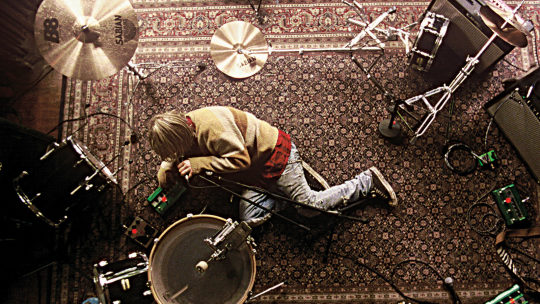
14. Last Days (2005) Last Days is a film with a weird energy and aura surrounding it… in some ways, it feels like the most performative film not only of the Death Trilogy, but out of the entire Gus Van Sant catalog. At the risk of using too negative an adjective, it also feels the most exploitive, though neither of these observations are necessarily meant to be a knock against the film. The Death Trilogy could not help but be exploitive at its root, as each film was inspired by an infamous death event, and with Michael Pitt’s Blake meant to be an avatar for Kurt Cobain, it would be simple to take the film at face value for some sort of glamourized and idealized fictional retelling of his tragic final moments, not to mention a few stylistic nods to iconic Cobain-related imagery. What that viewer would be missing, in my opinion, is a film looking to make some familiar points on outsider culture (specifically alternative rock and roll counterculture and addict culture) minus all the glamour and shine. While Blake’s house is grand, it’s decrepit and in a state of disrepair… despite it being isolated, expected and unexpected guests arrive constantly, not to mention an intrusive ringing phone that connects Blake to outworld obligations… Blake has a number of people living with him, but he almost never interacts with them. Michael Pitt is done up to look so similar to Kurt Cobain that much of the narrative background is implied, and what we are left with is the Death Trilogy style implemented and fused onto a loose leaf narrative with just enough structure to let the supporting actors have isolated memorable moments while we watch Pitt’s Blake decay in the ways that many of us Cobain fans ruminated on in the wake of his sudden and tragic death at the height of his tortured popularity.

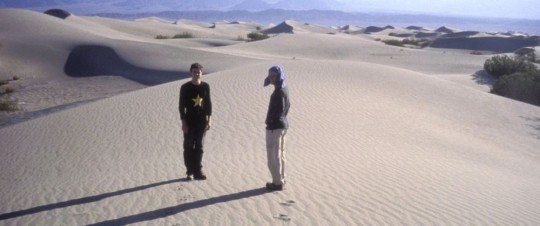
13. Gerry (2002) At the risk of sounding cliché, Gerry may be the most fascinating film in Gus Van Sant’s canon. It marks a clear and definitive break in convention from a director that seemingly never cared too much for convention anyway. Multiple aspects of this film make it extremely unique : both characters referring to one another by the same name (though Gerry eventually evolves into an all-purpose non-specific descriptor), a seemingly absent narrative, a shared goal between the characters literally referred to as “the thing” in order to purposely keep viewers in the dark and, perhaps most importantly, a deliberately methodical pacing that pushes even seasoned film lovers to the limits of their patience. The film is beautiful, and that is a fact that cannot be denied… the painterly shot compositions of our characters in the isolated desert, the unfathomably long tracking shots that pull us deeper off the beaten path and the sonic stillness (due to a largely absent score that is replaced with the sounds of nature) either commit you fully to the experiment or come off as massively pretentious. To view the film through that secondary lens, however, is to miss the point of it all. Once it is understood that Gerry marked the entry point for Gus Van Sant’s Death Trilogy, you began to realize that Van Sant, in tandem with Matt Damon and Casey Affleck, are giving us an understanding of how we should view the trilogy, and how open-minded we should be in processing what is given to us, like some early high-concept version of what Quentin Dupieux would later go on to master in a more abstract manner.

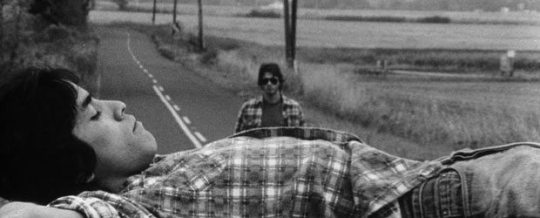
12. Mala Noche (1985) It’s fitting that this was a feature-length debut from a driven and working director, as it has a very distinct look and feel to it that immediately lets you know you’re dealing with an innate storyteller and someone who has spent time observing the human condition. In terms of visual and narrative balance, Gus Van Sant utilizes what feels like a mix of John Cassavetes and Jack Kerouac, respectively. Van Sant’s use of titles in the film is striking, specifically in terms of the handwritten opening credits and the Dr. Pepper ad copy used to subtitle the Spanish language dialogue. Focusing so heavily on immigration and homosexuality in 1985 is a bold choice, especially as neither group had yet to benefit (even if only minimally) from the onset of politically correct culture policing. While the film was more than likely shot in black and white due to budgetary constraints, the infusion of somewhat modern elements (for the time) gives it a youthful and forward-thinking energy. Having a film of this nature lean so heavily on multilingual and multicultural elements is refreshing, and even more impactful when examined under the boorish and (at times) tone deaf application that humanizes these elements. For all of these aspects of the film, however, when examined at the pure narrative foundation, what we find is a story about how love can blind us from the reality we inhabit, and how we often choose to ignore the obvious when romance and romanticism enters the picture.

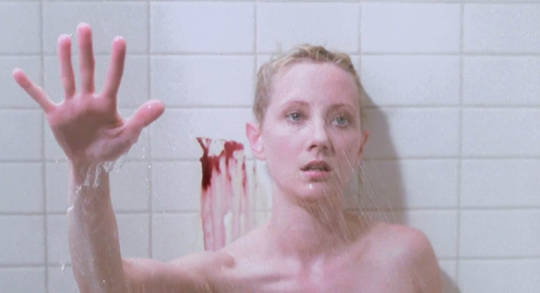
11. Psycho (1998) Of all the films in the Van Sant catalog, perhaps the bravest, boldest and most baffling entry is his nearly shot for shot remake of the iconic Alfred Hitchcock thriller and cinematic game changer Psycho. Remakes were certainly not a new or unheard of practice at the time of the Van Sant Psycho release, but most directors opt to put significant twists or updates into their retelling of most remakes, and most films chosen do not hold the lofty stature and position that Psycho does when it comes to remakes. Van Sant’s approach not only made viewers keenly aware of just how direct the homage was, but in some places, modern touches were added in very subtle ways to make the movie more palatable for modern audiences, including more salacious references to sexuality, sound design choices in both the diegetic and symbolic realm, and even an update or two to iconic scenes meant to make us much more uneasy with the Vince Vaughn portrayal of Norman Bates. The actors cast were all famous and respected enough to keep the film’s timeless feeling in-tact, even if the remake could be taken as its own weird and warped project. Personally, I’ve always loved this remake, and taken it as an experiment on the highest commercial level, and a signal to all that Van Sant (at the time) was done with the traditional approach to filmmaking and concepting.


10. Paranoid Park (2007) While many movies centered around skateboarding spend their time and design budget trying to make the outsider nature of the practice look “cool”, Paranoid Park spends its time making sure that the isolation, deep focus and rebellious attitude that come with skateboarding were more authentic than they were appealing. High school is already a very taxing and polarizing section of juvenile development, and based on your perception at the time, the weight that the world unloads on you can feel wholly unbearable. Perhaps this is what makes Paranoid Park such a tense film… that natural teenage angst is already imprinted into the film (and amplified due to the casting of relative unknowns), but Gus Van Sant’s signature use of alternative film stocks, obscure soundtrack and expressive, layered sound design but you square in Alex’s head from the opening moments. As the narrative unfolds, we realize that Alex is not only dealing with standard-issue teen stress, but has unwillingly found himself involved in the type of events that change an individual’s world. This film plays well as the first film post-Death Trilogy, as it deals with the gravity of mortality head-on much like the aforementioned three films, but does so from an adaptive stance rather than one based on true events. If you’re a fan of skater flicks, movies with strong teen acting, or little-known Gus Van Sant gems, then Paranoid Park is a gem waiting for discovery.

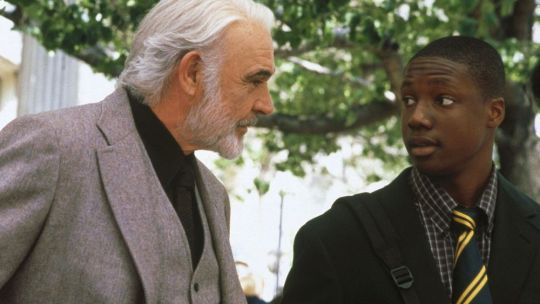
9. Finding Forrester (2000) Gus Van Sant has always had a way with stories that dive below the surface of the human experience and condition, so it makes sense that his attempt at a New York-based movie about people living in “the hood” would cover an array of topics with masterful subtlety, specifically the topics of race relations, generational gaps and the blurry line between education and exploitation. The casting on this film is extremely strong… then newcomer Rob Brown gives a riveting and dynamic lead performance, it’d be harder to cast a more perfect curmudgeon than Sean Connery, and appearances by F. Murray Abraham, Anna Paquin, Busta Rhymes and a Matt Damon cameo all stand out. Speaking of Damon, Finding Forrester shares a similar energy to Good Will Hunting, but the proximity of release ultimately held Finding Forrester from finding its proper audience (no pun intended). I wish I had more to say about this film outside of my personal feelings and connections to the story (which I will save for a dedicated deep dive in the future), but Finding Forrester is one of those films that has no trouble speaking for itself.

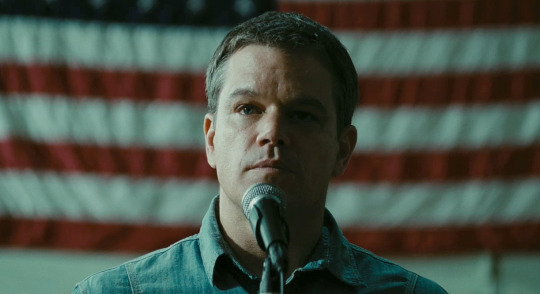
8. Promised Land (2012) As of the point that this blog post was created, this film stands as the last of the great Van Sant creations. There is something about the Gus Van Sant approach to filmmaking that works best with “salt of the Earth” types, and with Promised Land being centered around the practice of fracking, much of that down-home nature is immediately baked into the story. Speaking of the story, the film was co-written by the characters who ended up being the protagonist and antagonist of the picture, respectfully, which created an electric main dynamic that served as the spine for many other strong dynamics present in the film. In terms of the cinematography, much of Van Sant’s bold approaches and stylistic shifts are absent, save for a few beautiful bird’s eye view perspective shots that give you a real idea of what rural America looks like. Van Sant is no stranger to stacked casts, but he gets some truly top notch names to take part in this affair, and true to the clout behind these names, the performances are as stellar as they are believable and natural. The film also touched a nerve with the actual oil industry due to some of its comments on fracking, despite it not having the reach or success of other Van Sant films. While possibly an indicator that Van Sant would be making a stylistic shift, Promised Land still manages to capture what makes Van Sant his best self in terms of not only presenting real people, but topical and important situations.

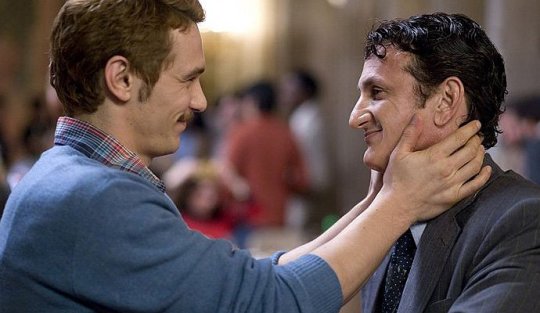
7. Milk (2008) Gus Van Sant is clearly no stranger to having representation for the gay community in his films, so it makes sense that one of the hallmark films in his canon would center around gay rights activist and politician Harvey Milk. Much like JFK crystalized Oliver Stone, or Spike Lee was raised to another echelon by Malcolm X, Van Sant found a second round of Academy Award-level validation via this biopic while solidifying himself as a creative who could go back and forth effortlessly between big budget studio films and independent projects. With Sean Penn giving one of his signature chameleon-like performances and leading the pack, this Van Sant production is filled with tons of burgeoning talent who have since gone on to make names for themselves in the industry, including the likes of Emile Hirsch, Diego Luna, James Franco, Alison Pill and others, plus a standout performance from Josh Brolin (who also depicted George W. Bush in the same year for the aforementioned Stone). While it may not be the most technically marveling film of Van Sant’s career, it is clearly one of his most important, and the way that it handles the messages it intends to share is as confident as it is even-keeled, which is important for a film that could have easily become a soapbox for espousing personal beliefs and political agendas.


6. Even Cowgirls Get the Blues (1993) This Gus Van Sant adaptation of the famed author Tom Robbins novel shares the same creative energy of films like Fear and Loathing in Las Vegas, Natural Born Killers, Harold and Maude and so on in the sense that it is a very expressive film with a very specific idea it is looking to present. Where the aforementioned films explored ideas of free love taken to the extreme, the toxicity of media, love without judgement and so on (respectively), Even Cowgirls Get the Blues puts femininity and identity outside of the male gaze squarely in its crosshairs. Uma Thurman takes on the role of Sissy with wide-eyed zeal, floating through a series of hitchhiker-based adventures until her reluctant visit to the Rubber Road Ranch helps her find the missing piece of her puzzle. Seeing a bizarre, star-studded tale of a woman finding her agency sounds like it would work on the surface, but from what I could find, the film failed to make a connection with audiences and is considered a commercial and critical failure (which is probably why it was the toughest film to track down on this list). That being said, I’m a sucker for films that catch a bad rap, especially when the combination of such a unique director and visionary author are the foundation of it, because it makes me curious about why I find connection where others did not… who knows, maybe it was those extremely distracting rubber thumbs (the only real knock I can make on the film), or maybe the Tom Robbins style is tough to transfer from page to screen, but for my money’s worth, I can see the vision.


5. My Own Private Idaho (1991) Somewhere within the intersection of films like Midnight Cowboy and Fight Club lies My Own Private Idaho, an extremely personal and nuanced film that covers many topics with depth and an ease that comes with wisdom and experience. For example, when it comes to views on identity, we get two rich narratives that could easily both be their own film : Mike (portrayed by River Phoenix) is going through a crisis of identity based on a sordid history with his mother and absentee father that makes his search for love transform into a life of hustling as a way to find momentary intimacy; meanwhile, Keanu Reeves (who plays Scott) is an entitled young man awaiting an inheritance that decides to spend the time until it happens “slumming” with those many would consider the outcasts of society, much like the “tourists” spoken of by Edward Norton’s narrator in Fight Club. The struggle with masculinity in the face of homosexuality is all over this film, from its multiple male on male connections to the very toxic manner that the core group interacts with one another, when they are not grieving or putting their livelihood in danger via petty crimes. In terms of Van Sant style, the film is one of his most innovative (outside of the film holding the top spot) in terms of looks, with its unique range of colorful title cards, the pinhole vision that Mike uses on his road, or even the standout magazine rack sequence. The film is also a perfect follow-up to Drugstore Cowboy, and could easily double feature with it to this day. As someone not wholly familiar with Shakespeare’s Henry plays, I did not catch that My Own Private Idaho was an adaptation, so I will not only have to revisit it with that familiarity in tow, but I will have to take a look into James Franco’s re-cut, My Own Private River, as well.

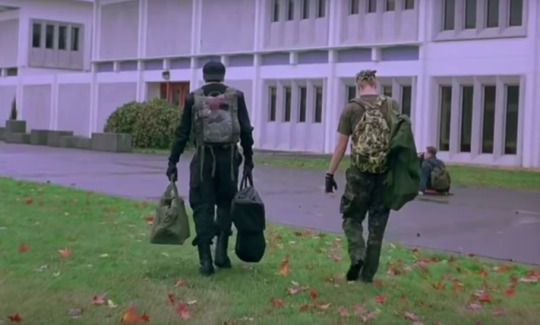
4. Elephant (2003) Based solely on the nature and definition of a trilogy, a second film can make or break things. Gerry and Last Days share similarities in how quiet and isolated they are, so it makes sense that Elephant, part two of Van Sant’s Death Trilogy, would in many ways be the meat of the trilogy sandwich in terms of style and thematic substance. Elephant operates on several distinct levels based on Van Sant’s observations of the world going into the new millennium, as the film allowed him a foundation for both experimentation and examination by proxy. While the long takes and vast amount of distance traveled during said takes was present in all three films of the trilogy, Van Sant made a concentrated effort to make the shots look and feel similar to that of video games like the later Grand Theft Auto entries, hence a number of the shots being positionally locked during travel (often times a few feet behind the character at the center of that moment’s focus). There are ramp-downs of the frame rate to punctuate certain moments, and quite often the camera is thrown on a tripod and allowed to take in the array of high schoolers living their standard life. It is this mundane world-building aspect that not only gives the viewer a rapid but deep look into a handful of character’s lives, but it gives you a sense of the school’s social hierarchy while forcing you to reflect on where you once stood within it. Per the film’s clever title, the elephant in the room eventually appears in the form of Eric and Alex, the pair of school shooters meant to reflect the Columbine Massacre perpetrators. While school shootings weren’t an unknown phenomenon going into the 2000’s, Elephant became prophetic in its vision by releasing right before the numbers started rising at an alarming rate on these incidents. In that sense, Elephant holds the dual distinction of not only being one of Van Sant’s best films, but one of his most important. I will soon be looking into the 1989 Elephant film as well.

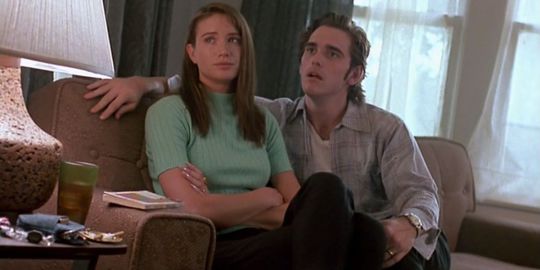
3. Drugstore Cowboy (1989) The power of Drugstore Cowboy as a modern-day narrative tragedy about the epidemic of prescription drugs, the dark allure of crime and the oddball way that broken people find solace in one another is immediately evident to anyone who has had the pleasure to see Gus Van Sant’s studio directorial debut. Where the film really stands out however, in my opinion, is the way that Van Sant is able to achieve his major studio look while deeply applying a very artistic and personal aesthetic to the cinematography and editing. The traditional looks are interspersed with the use of different film stocks, subtle blends of animation and flashes of stylistic edits that were almost certainly an inspiration for Darren Aronofsky’s “hip-hop editing” style. Add to this an incredibly intuitive and expressive core cast driven by the chemistry between Matt Dillon and Kelly Lynch (and a very early Heather Graham supporting appearance), plus a strong appearance by the always memorable Max Perlich, a fiery James Remar performance and an iconic cameo from William S. Burroughs. The jazz-influenced score not only makes key scenes livelier, but it is a symbolic statement on the drug use depicted in the film, while simultaneously playing counter to the soundtrack choices. Period, point-blank, Drugstore Cowboy is the kind of film that surely put the world on notice, and was a clear signal of the magnificent work that would follow.

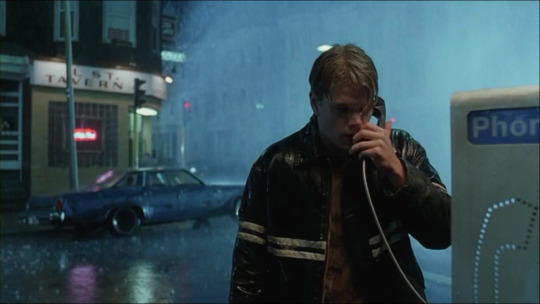
2. Good Will Hunting (1997) If held up to the standards of what people consider to be good (or even classic) film, Good Will Hunting more than holds up to scrutiny. Visually there are a small handful of flourishes, and having Elliot Smith’s music accompany Will’s painful but enlightening journey has only become more of a bittersweet sting as the years go by. In terms of performances, everyone brought their A+ game to the table, be it the leading performances of Matt Damon, Robin Williams or Stellan Skarsgård, the supporting performances of Ben Affleck or Minnie Driver, or even the engaging nature of Cole Hauser and repeat scene stealer Casey Affleck. After a flurry of dedicated fandom viewings in the years following this film’s release, a very long period away from the film where I had leagues of personal growth, and a revisitation for this set of rankings, what I have discovered is that Good Will Hunting presents a wish fulfillment fantasy that was nearly incapable of being a reality in the pre-internet age for anyone other than a character like Will : an undiscovered genius with a degree from the school of hard knocks. In a world where people often wish they had the correct answer to every question, the looks and personality to be a social magnet, and the ability to back up any tough talk with stone hands, Will Hunting stood as an idealized example you wished you could peel off the screen and have some beers with. As the internet has invaded our lives, however, most everyone has turned into a keyboard version of Will Hunting, looking for fights online when not having briefly intimate Google sessions to flex our supposed knowledge. Much like Will, many people find that the knowledge minus the wisdom of worldly experience and vulnerability leaves you a shell of a person filled to the eyeballs with regret, and perhaps that is why this film only gets better as the years go by, and remains among the best of the Van Sant creations.

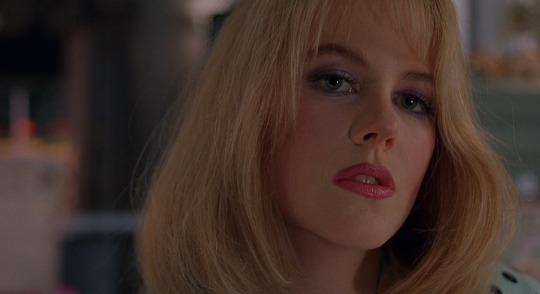
1. To Die For (1995) For the longest time, I avoided To Die For simply because I was not a fan of Nicole Kidman… the vast majority of her roles held no interest to me prior to To Die For (it took Eyes Wide Shut for me to really start paying attention to her), and because she was so key to the film, there was never a sense of urgency about seeing it. As time went by, however, I started to hear rumblings that To Die For may have been a bit ahead of its time, to the point that technology and social practices have caught up to some of the ideas presented in the film. I finally watched it for this ranking set, and man, I really missed the boat on this one. Plain and simple, this film is pure genius on every level. The presentation starts off documentary-esque, which not only allows for expedited distribution of backstory information, but immediately gives you an idea for the personalities of our key characters. Kidman’s portrayal of Suzanne stood as the textbook example for what has become commonly known as sociopathy, with her blind desire for fame and respect leading to a wake of human destruction. In terms of narrative pacing, the film proceeds like a match dropped at the endpoint of a long gasoline trail, slowly drifting towards the eventually point that everything blows up and damage must be assessed while blame and accountability must be handled, resulting in a truly powerful ending more than deserving of the heavy lifting that precedes it. The 24-hour news cycle was on the horizon in 1995, daytime talk shows and MTv’s The Real World had not shifted into the reality TV landscape that we know today, and while a few high profile cases such as the Menendez Brothers and Pamela Smart trial (the loose inspiration for this film) had happened, the bombshell and watershed trail that was the O.J. Simpson murder case was hot on the heels of To Die For’s release (the same month, actually). Stylistically, the film also bears striking resemblance to an updated version of Sunset Boulevard, be it knowingly or not. Long story short, the best films not only comment on the times in which they are created, but gain relevance as time passes, and To Die For handled both of these things phenomenally.
#ChiefDoomsday#DOOMonFILM#GusVanSant#MalaNoche#DrugstoreCowboy#MyOwnPrivateIdaho#EvenCowgirlsGetTheBlues#ToDieFor#GoodWillHunting#Psycho#FindingForrester#Gerry#Elephant#LastDays#ParanoidPark#Milk#Restless#PromisedLand#TheSeaOfTrees#DontWorryHeWontGetFarOnFoot
22 notes
·
View notes
Photo




Native American Authors: Featured Works
The Absolutely True Diary of a Part-Time Indian by Sherman Alexie, Ellen Forney (Illustrator)
Bestselling author Sherman Alexie tells the story of Junior, a budding cartoonist growing up on the Spokane Indian Reservation. Determined to take his future into his own hands, Junior leaves his troubled school on the rez to attend an all-white farm town high school where the only other Indian is the school mascot. Heartbreaking, funny, and beautifully written, The Absolutely True Diary of a Part-Time Indian, which is based on the author's own experiences, coupled with poignant drawings by Ellen Forney that reflect the character's art, chronicles the contemporary adolescence of one Native American boy as he attempts to break away from the life he was destined to live. With a foreward by Markus Zusak & interviews with Sherman Alexie and Ellen Forney
The Plague of Doves by Louise Erdrich
The unsolved murder of a farm family still haunts the white small town of Pluto, North Dakota, generations after the vengeance exacted and the distortions of fact transformed the lives of Ojibwe living on the nearby reservation.
Part Ojibwe, part white, Evelina Harp is an ambitious young girl prone to falling hopelessly in love. Mooshum, Evelina's grandfather, is a repository of family and tribal history with an all-too-intimate knowledge of the violent past. And Judge Antone Bazil Coutts, who bears witness, understands the weight of historical injustice better than anyone. Through the distinct and winning voices of three unforgettable narrators, the collective stories of two interwoven communities ultimately come together to reveal a final wrenching truth.
Empire of Wild by Cherie Dimaline
Broken-hearted Joan has been searching for her husband, Victor, for almost a year--ever since he went missing on the night they had their first serious argument. One terrible, hungover morning in a Walmart parking lot in a little town near Georgian Bay, she is drawn to a revival tent where the local Métis have been flocking to hear a charismatic preacher named Eugene Wolff. By the time she staggers into the tent, the service is over. But as she is about to leave, she hears an unmistakable voice. She turns, and there Victor is. The same face, the same eyes, the same hands. But his hair is short and he's wearing a suit and he doesn't recognize her at all. No, he insists, she's the one suffering a delusion: he's the Reverend Wolff and his only mission is to bring his people to Jesus. Except that, as Joan soon discovers, that's not all the enigmatic Wolff is doing. With only the help of Ajean, a foul-mouthed euchre shark with a knowledge of the old ways, and her odd, Johnny-Cash-loving, 12-year-old nephew Zeus, Joan has to find a way to remind the Reverend Wolff of who he really is. If he really is Victor. Her life, and the life of everyone she loves, depends upon it.
Heart Berries by Terese Marie Mailhot
Heart Berries is a powerful, poetic memoir of a woman's coming of age on the Seabird Island Indian Reservation in the Pacific Northwest. Having survived a profoundly dysfunctional upbringing only to find herself hospitalized and facing a dual diagnosis of post traumatic stress disorder and bipolar II disorder; Terese Marie Mailhot is given a notebook and begins to write her way out of trauma. The triumphant result is Heart Berries, a memorial for Mailhot's mother, a social worker and activist who had a thing for prisoners; a story of reconciliation with her father―an abusive drunk and a brilliant artist―who was murdered under mysterious circumstances; and an elegy on how difficult it is to love someone while dragging the long shadows of shame. Mailhot trusts the reader to understand that memory isn't exact, but melded to imagination, pain, and what we can bring ourselves to accept. Her unique and at times unsettling voice graphically illustrates her mental state. As she writes, she discovers her own true voice, seizes control of her story, and, in so doing, reestablishes her connection to her family, to her people, and to her place in the world.
#Native American Heritage Month#native american authors#fiction#fantasy#non-fiction#nonfiction#to read#tbr#reading recommendations#Book Recommendations#book recs#NAHM#highly recommend#library books
5 notes
·
View notes